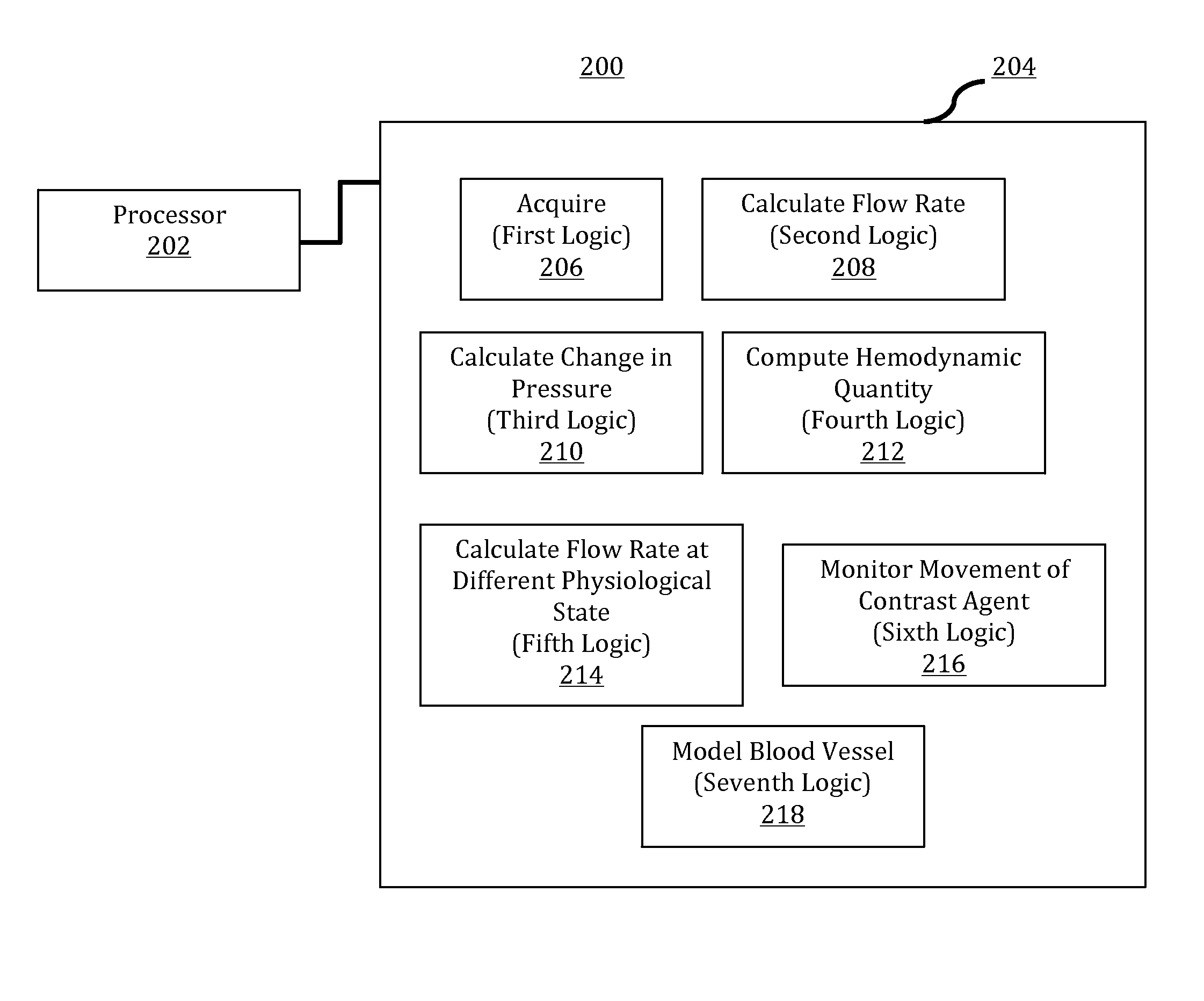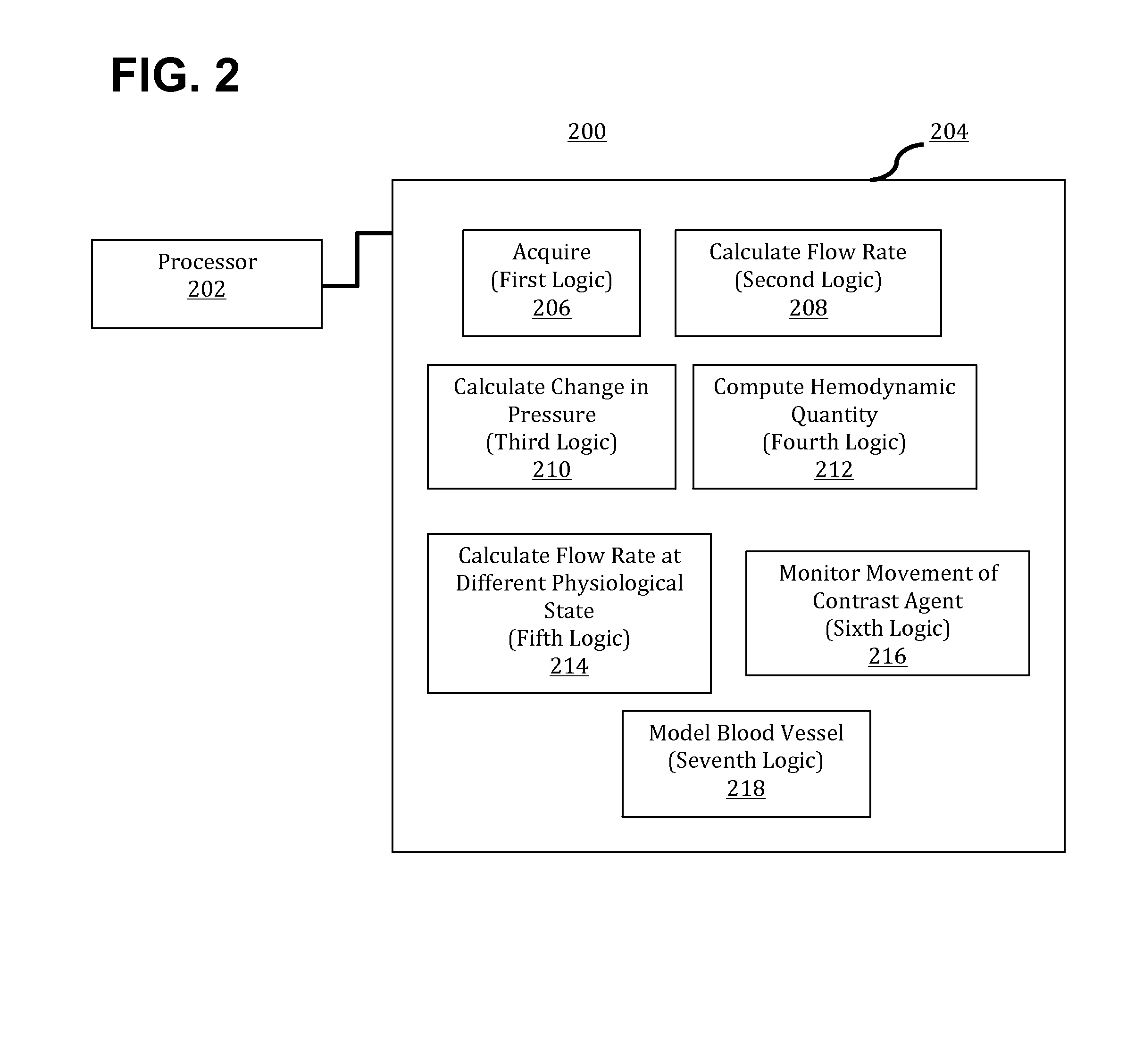Computation of Hemodynamic Quantities From Angiographic Data
a hemodynamic and angiographic technology, applied in the field of hemodynamic quantities, can solve the problems of large incidence of premature morbidity and mortality, insufficient clinical decision-making, and insufficient anatomical assessment provided by such techniques,
- Summary
- Abstract
- Description
- Claims
- Application Information
AI Technical Summary
Benefits of technology
Problems solved by technology
Method used
Image
Examples
Embodiment Construction
[0022]Angiography-based methods and systems for computing hemodynamic quantities by calculating flow rates and / or changes in pressure in a patient's blood vessel have been discovered and are described herein. The hemodynamic quantities—for example, fractional flow reserve (FFR)—may be computed based on the calculated flow (e.g., flow rates and / or flow velocities) and / or changes in pressure. Angiography-based FFR in accordance with the present teachings is applicable in different scenarios, such as hyperemic states and rest states of a patient. In addition, angiography-based FFR may bypass the use of pressure wires and involve lower radiation exposure and reduced contrast use as compared to conventional methodologies, thereby providing enhanced workflows and reduced costs.
[0023]FFR is defined as the ratio of maximum blood flow behind (distal to) a stenosis to normal maximum blood flow in the same blood vessel. The determination of FFR values may be used in coronary catheterization as...
PUM
 Login to View More
Login to View More Abstract
Description
Claims
Application Information
 Login to View More
Login to View More - R&D
- Intellectual Property
- Life Sciences
- Materials
- Tech Scout
- Unparalleled Data Quality
- Higher Quality Content
- 60% Fewer Hallucinations
Browse by: Latest US Patents, China's latest patents, Technical Efficacy Thesaurus, Application Domain, Technology Topic, Popular Technical Reports.
© 2025 PatSnap. All rights reserved.Legal|Privacy policy|Modern Slavery Act Transparency Statement|Sitemap|About US| Contact US: help@patsnap.com



